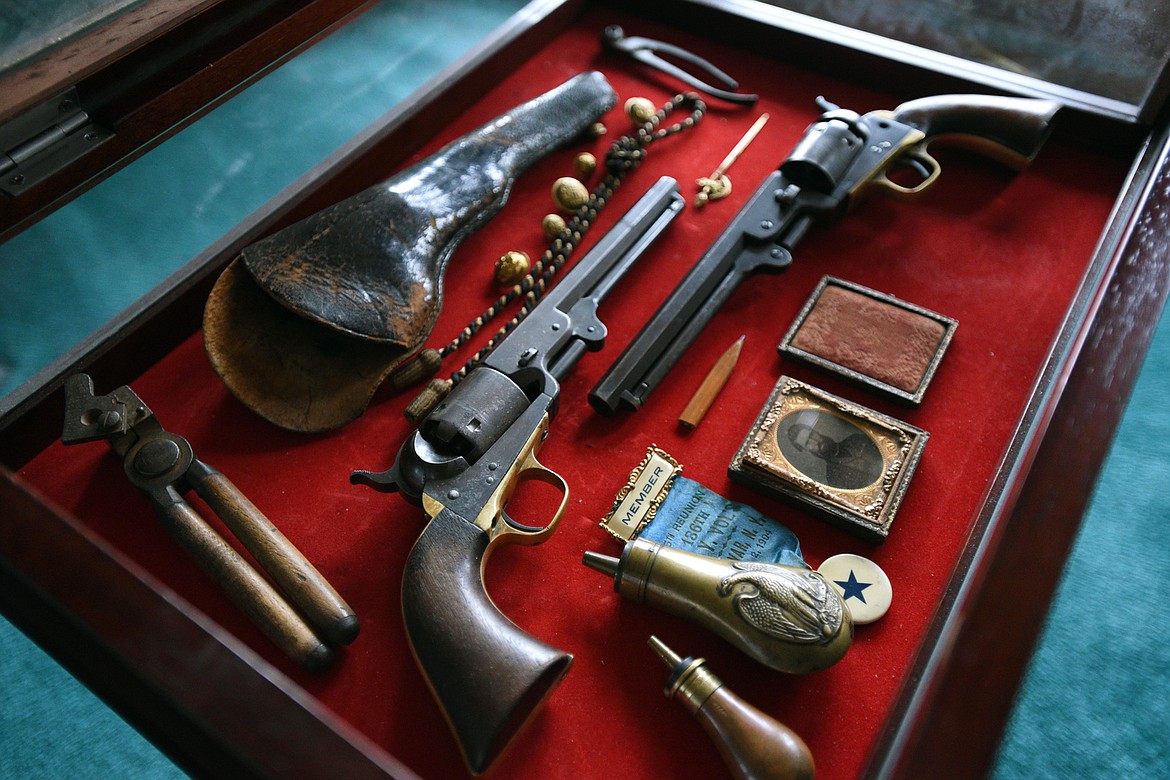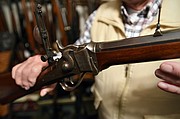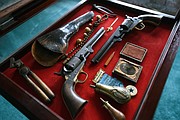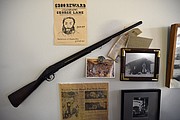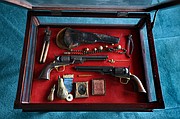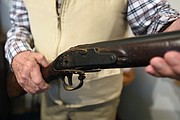Antique gun collector donates firearms to museums
A rifle owned by alleged Montana outlaw Clubfoot George in the 1860s is headed to the Montana Historical Society to be kept in perpetuity, thanks to Bigfork gun collector Jack Paulson.
Paulson, 79, has been collecting antique guns for decades and recently decided it’s time for some of his most historic firearms to be displayed more prominently in a museum setting.
“These are museum pieces,” he said, holding a Sharps Model 1874 rifle that came to Montana as a buffalo gun in the late 1800s. “It would probably shoot 1,000 yards accurately.
“A lot of these guns are one-of-a-kind,” he added.
The Sharps rifle, appraised at $9,000, is one of several firearms and related items that will be donated to the Rocky Mountain Museum of Military History at Fort Missoula. Paulson also is donating a Model 1822 Harpers Ferry .69-caliber flintlock musket and a pair of Colt 1851 Navy pistols used in the Civil War. Civil War bullet molds, powder flasks and other items — including a tin case with a lock of soldier’s hair — are part of the donation.
Paulson said well-known gun appraiser Hayes Otoupalik determined the worth of the historic firearms. The collection going to the Missoula museum is valued at $21,450.
The 1839 Springfield musket, a Model 1816, which belonged to George Lane, known widely as Clubfoot George, is valued at $12,500. That firearm has quite the story behind it.
Clubfoot George, a shoemaker by trade, went by that nickname because of his deformed foot. He was accused of being a member of Henry Plummer’s “Gang of Innocents” and although he declared he was innocent, the Montana vigilantes hanged him in January 1864.
As the story goes, Lane, of Massachusetts, came out West during the California gold rush, but by 1863 had made his way to rough-and-tumble Virginia City in the Montana territory. He went to work making and repairing boots and harnesses and reportedly had earned the respect of his employer. But he came under suspicion when he rode to Bannack to inform notorious outlaw Henry Plummer of a trial taking place. The vigilantes deemed Clubfoot George a spy for the outlaw gang known as the Innocents, and he along with four others were sentenced to be hanged, according to the Legends of America history website.
Lane was buried in an unmarked grave, and more than four decades after his death a former vigilante came forward, saying he knew where Clubfoot George had been buried. When Virginia City officials dug up the grave, sure enough, there was the deformed foot.
It was preserved and is on display yet today in a glass jar at a Virginia City museum.
Coincidentally, Paulson recalls seeing the “pickled foot” in his younger days during a school trip to Virginia City. He never imagined he’d one day own the gun of one of Montana’s most colorful early day characters.
Clubfoot George’s rifle, which has some damage and a missing hammer, was owned at one time by Clifton Worthen, a noted Montana historian from Lewistown. It later became part of the Bovey family’s collection. Paulson bought the famous rifle when it was auctioned off as part of the Bovey estate.
A native of Chinook, Paulson first became interested in firearms at his dad’s hardware store, which sold guns.
“I was a hunter all my life,” Paulson said. “I’ve always collected .22s and other guns.”
Paulson taught high-school electronics in Great Falls for a decade before he transitioned to a career in construction.
“I built my way out of teaching,” he said.
Paulson’s interest in electronics has led to an impressive collection of phonographs and other early electronic instruments. But Paulson has a passion for antiques of every kind, as a tour of his log home attests.
Folks around Bigfork also know about Paulson’s love of antique cars. His turquoise 1956 Lincoln — his favorite classic car because it was made the year he graduated from high school — is a show-stopper at local car shows.
Another donation Paulson will be making is a collection of documents and artifacts related to the historic townsite of Demersville
Founded in 1887 by cattle baron and freighter T.J. Demers, Demersville was built on the Flathead River south of Kalispell in the Lower Valley area and was the forerunner of Kalispell. After the railroad arrived in Kalispell instead of Demersville in late 1891, the river town dried up and most of its buildings were moved to Kalispell in 1891 and 1892.
Paulson bought the collection of artifacts years ago during an auction at Gardner’s Auction in Kalispell. It contains an original room key from the Cliff House Hotel.
The collection will be donated to the Museum at Central School in Kalispell, which has a permanent display of Demersville history that recently was updated.
“This ought to stay right here in Kalispell,” Paulson said.
Features editor Lynnette Hintze may be reached at 758-4421 or lhintze@dailyinterlake.com.



